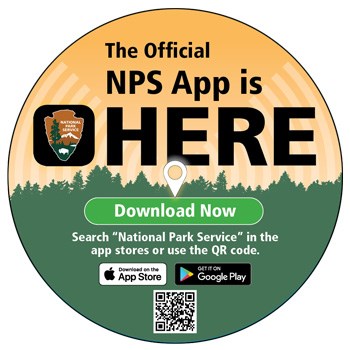Last updated: March 28, 2025
Article
Essential Acadia: Top 5 Things To Know Before Visiting
Transcript
Welcome to Acadia National Park, the Crown Jewel of the North Atlantic Coastline. Learn more about the park and make plans for your visit at nps.gov/acadia.
All visitors aged 16 and above must have a park entrance pass. All vehicles must display a pass clearly visible through the windshield. Pass purchase options are described fully online at go.nps.gov/AcadiaPass.
If you want to drive up the Cadillac Summit Road between late-May and mid-October, you will also need to buy a vehicle reservation. These are only sold online in advance and are not available for purchase in person in the park. Learn more at Recreation.gov
All sites in park campgrounds require an advance reservation at Recreation.gov. There is no backcountry camping or overnight parking allowed anywhere in Acadia. Accommodations may be available in nearby towns. Visit go.nps.gov/AcadiaChambers
Try a car-free experience.The fare-free Island Explorer serves most of the park and surrounding communities except Cadillac Mountain. Using the propane-powered bus reduces traffic congestion and air pollution. More at go.nps.gov/IslandExplorer
Pets are welcome in Acadia, but rules apply. Federal law requires that all pets must be kept on a leash no longer than 6 feet (2 m) at all times. Collect and dispose of animal waste in trash containers. Find information about service animals, the Bark Ranger program, and a list of locations where pets are restricted from entry at go.nps.gov/AcadiaPets
All natural areas pose risk. Your safety depends on your own good judgement. Before setting out on the park’s hiking trails, carefully research hazards and challenges along your planned route. Please do not rely on your cellphone as a map or flashlight. Always carry extra water, a detailed map, warm layers, and foot traction as conditions warrant. Bicycles and horses are not allowed on hiking trails. Check for trail closures and current conditions at go.nps.gov/AcadiaAlerts
Carriage roads are open year-round to multiple recreational uses. Pedestrians must yield to horses and cyclists must yield to horses and pedestrians. Only Class 1 E-bikes are allowed on carriage roads. Motorized vehicles and Class 2 & 3 E-bikes are prohibited. In winter, please avoid trampling groomed ski tracks.
Please leave Acadia as you find it. Walk only on designated trails and durable surfaces. Pack out trash and pet waste. Secure food and keep your distance from wildlife. Do not stack rocks or alter cairns used for trail navigation. If you discover a cultural artifact, leave it in place, snap a picture, note the location, and tell a park ranger. Learn more at go.nps.gov/AcadiaTrace
- Duration:
- 3 minutes, 29 seconds
George B. Dorr, a key park founder and first superintendent, hosts this video of Essential Acadia messages with the help of artificial intelligence technology.
Welcome to Acadia National Park
— Crown Jewel of the North Atlantic Coastline. Learn more about the park and make plans for your visit at nps.gov/acadia.
Avoid Lines: Buy Before You Arrive
All visitors aged 16 and above must have a park entrance pass. All vehicles must display a pass clearly visible through the windshield. Pass purchase options are described fully online at go.nps.gov/AcadiaPass.
If you want to drive up the Cadillac Summit Road between late-May and mid-October, you will also need to buy a vehicle reservation. These are only sold online in advance and are not available for purchase in person in the park. Learn more at Recreation.gov
All sites in park campgrounds require an advance reservation at Recreation.gov. There is no backcountry camping or overnight parking allowed anywhere in Acadia. Accommodations may be available in nearby towns. Visit go.nps.gov/AcadiaChambers
Ride With Us
Try a car-free experience.The fare-free Island Explorer serves most of the park and surrounding communities except Cadillac Mountain. Using the propane-powered bus reduces traffic congestion and air pollution. More at go.nps.gov/IslandExplorer
Protect Your Pet Privileges
Pets are welcome in Acadia, but rules apply. Federal law requires that all pets must be kept on a leash no longer than 6 feet (2 m) at all times. Collect and dispose of animal waste in trash containers. Find information about service animals, the Bark Ranger program, and a list of locations where pets are restricted from entry at go.nps.gov/AcadiaPets
Your Safety Starts With You
All natural areas pose risk. Your safety depends on your own good judgement. Before setting out on the park’s hiking trails, carefully research hazards and challenges along your planned route. Please do not rely on your cellphone as a map or flashlight. Always carry extra water, a detailed map, warm layers, and foot traction as conditions warrant. Bicycles and horses are not allowed on hiking trails. Check for trail closures and current conditions at go.nps.gov/AcadiaAlerts
Carriage roads are open year-round to multiple recreational uses. Pedestrians must yield to horses and cyclists must yield to horses and pedestrians. Only Class 1 e-bikes are allowed on carriage roads. Motorized vehicles and Class 2 & 3 e-bikes are prohibited. In winter, please avoid trampling groomed ski tracks.
Leave No Trace
Please leave Acadia as you find it. Walk only on designated trails and durable surfaces. Pack out trash and pet waste. Secure food and keep your distance from wildlife. Do not stack rocks or alter cairns used for trail navigation. If you discover a cultural artifact, leave it in place, snap a picture, note the location, and tell a park ranger. Learn more at go.nps.gov/AcadiaTrace
Essential Acadia: Braille
- Download a Braille Ready Format (BRF) (32cpl25lpp) translation of the Essential Acadia messages.
Essential Acadia: Audio Recording
-
Essential Acadia: Audio Recording
An audio recording introducing a list of essential things to know about visiting Acadia National Park.
- Date created:
- 10/06/2023

